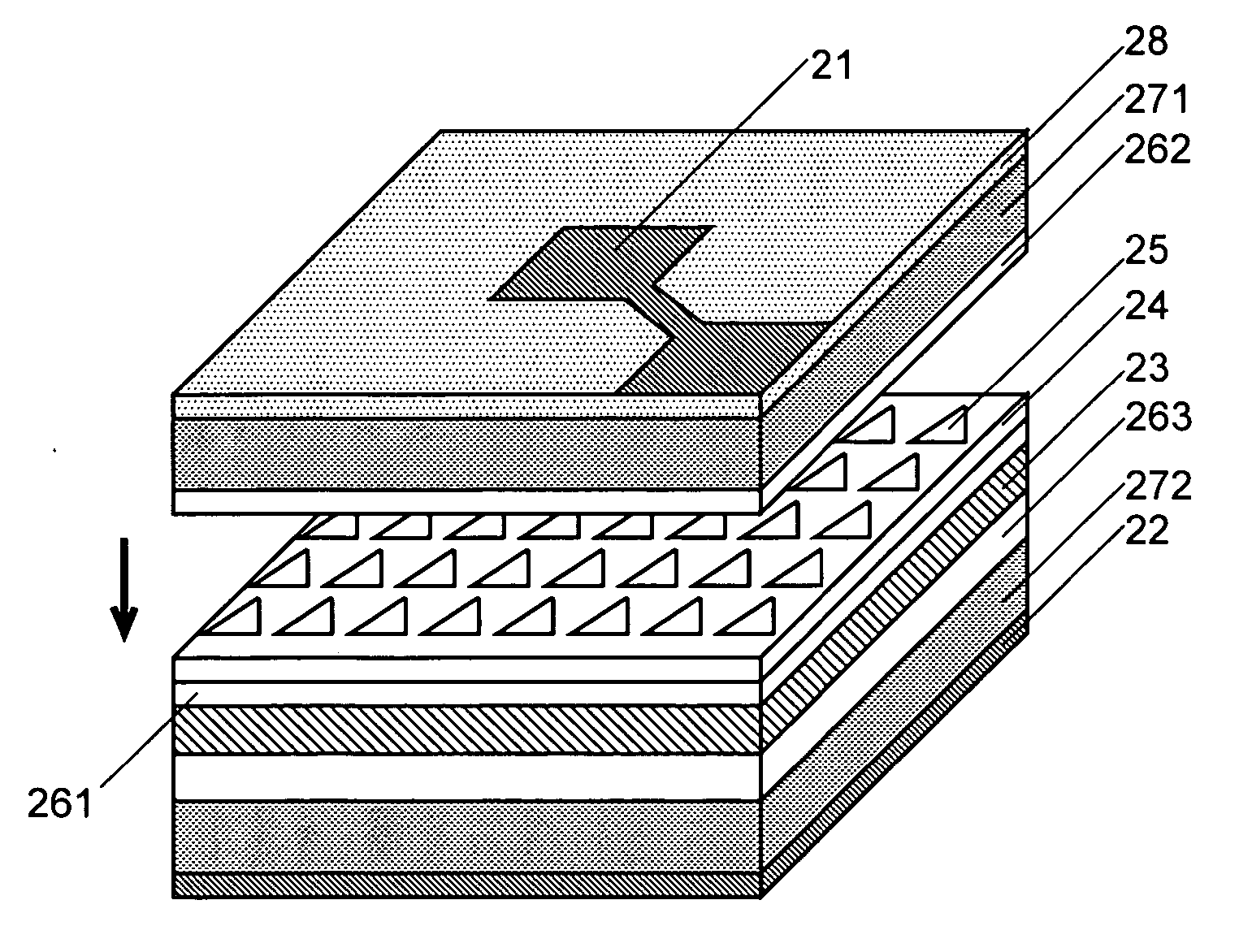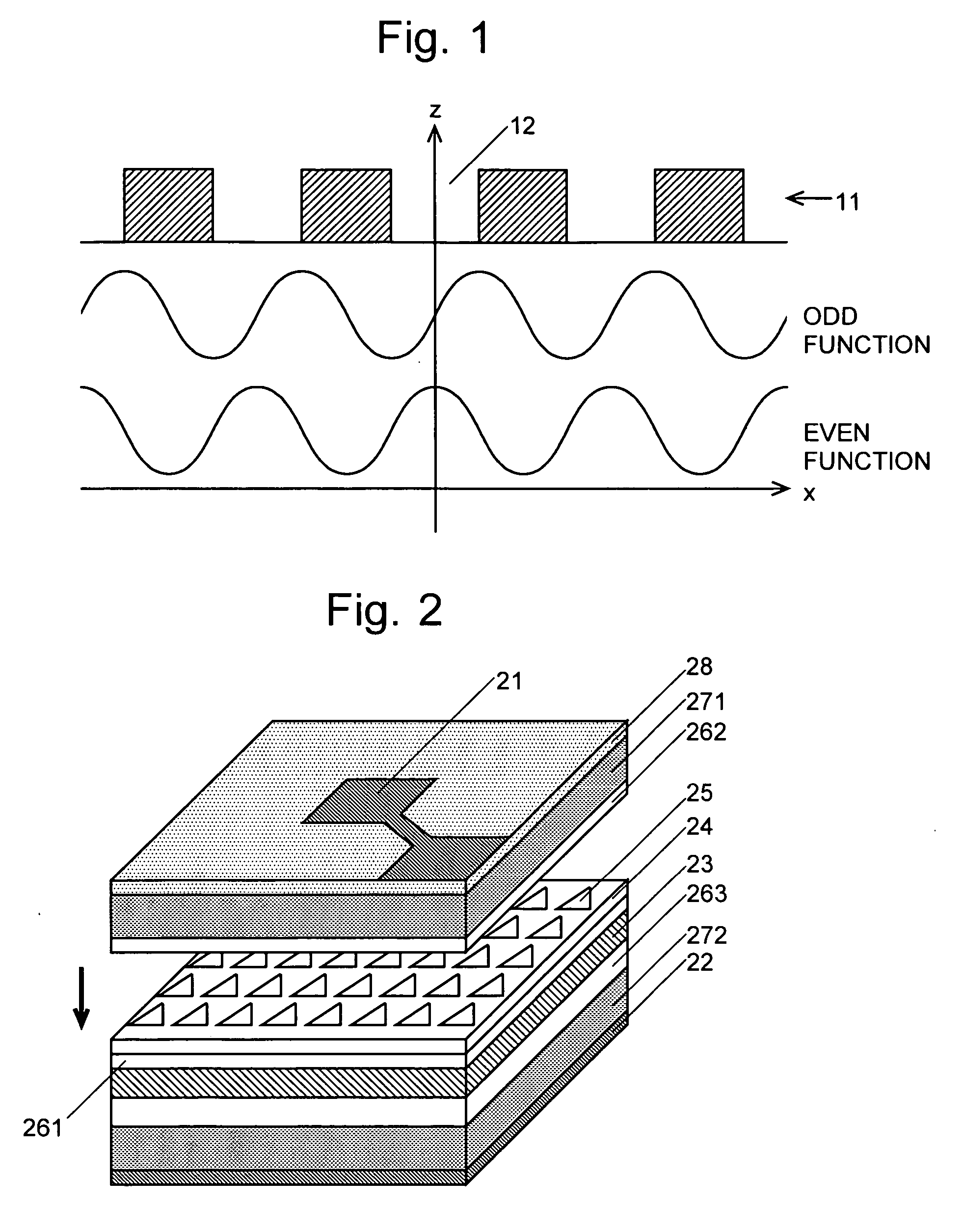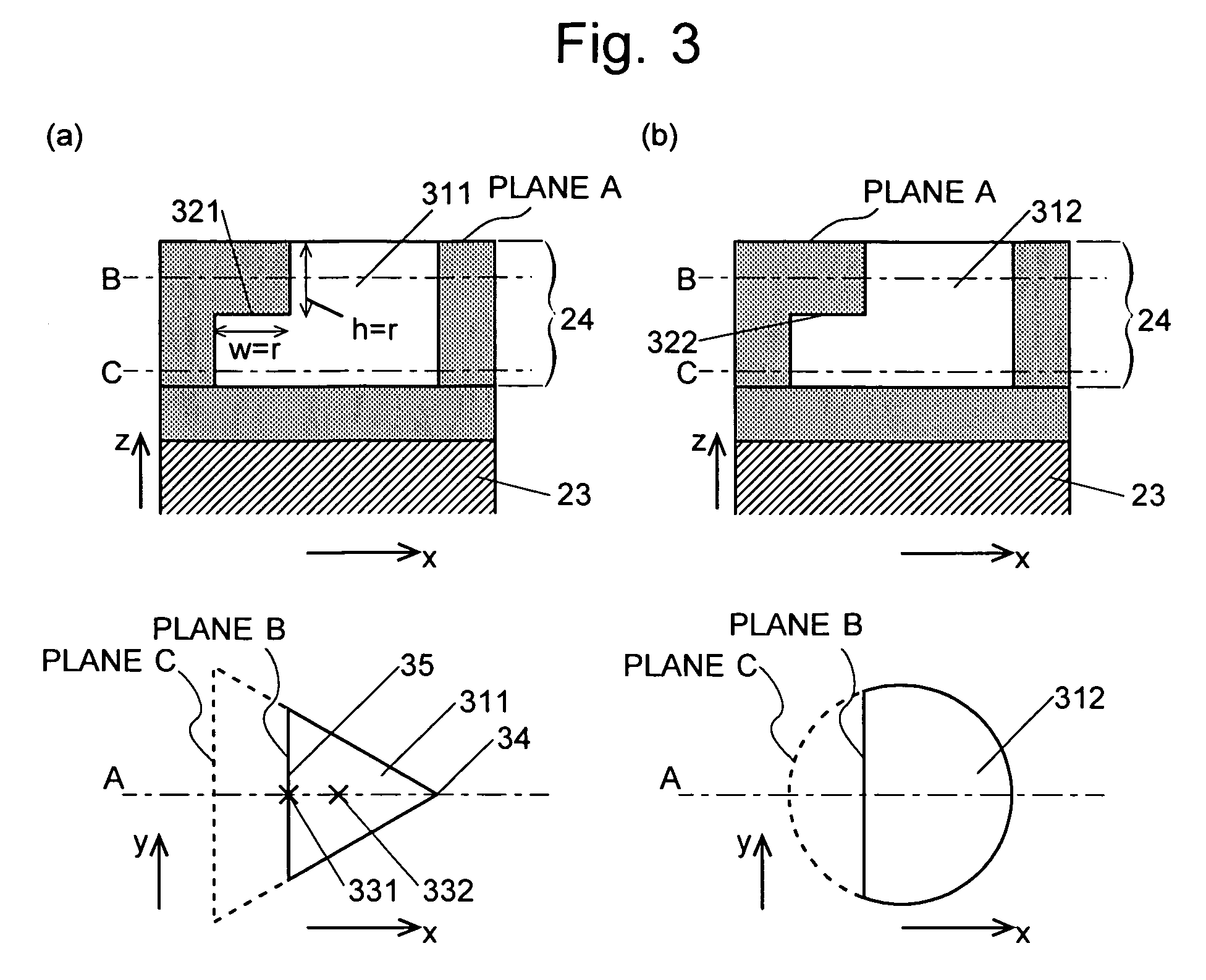Surface-emitting laser light source using two-dimensional photonic crystal
a laser light source and photonic crystal technology, applied in the direction of lasers, laser optical resonators, semiconductor lasers, etc., can solve the problems of inability to obtain a single-lobed beam profile with the laser light source, the the anti-symmetric mode of light cannot be extracted in the direction perpendicular to the surface, etc., to achieve the effect of lowering the degree of in-plan
- Summary
- Abstract
- Description
- Claims
- Application Information
AI Technical Summary
Benefits of technology
Problems solved by technology
Method used
Image
Examples
embodiment
[0051] An embodiment of the surface-emitting laser light source using a two-dimensional photonic crystal according to the present invention is described with reference to FIG. 2. An active layer 23 made of Indium Gallium Arsenide (InGaAs) / Gallium Arsenide (GaAs) and having multiple-quantum wells (MQW) is provided between the anode 21 and the cathode 22. A two-dimensional photonic crystal layer 24 made of p-type GaAs is formed on the active layer 23 via a spacer layer 261, which is also made of p-type GaAs. The two-dimensional photonic crystal layer 24 consists of a plate member having holes 25 periodically arranged in a square lattice pattern. In the present embodiment, the spacer 261 and the two-dimensional photonic crystal layer 24 are integrally created as a single layer, in which the holes 25 are present only in the upper portion corresponding to the two-dimensional photonic crystal layer 24. A spacer layer 262 made of p-type GaAs, a cladding layer 271 made of p-type AlGaAs and ...
PUM
 Login to View More
Login to View More Abstract
Description
Claims
Application Information
 Login to View More
Login to View More - R&D
- Intellectual Property
- Life Sciences
- Materials
- Tech Scout
- Unparalleled Data Quality
- Higher Quality Content
- 60% Fewer Hallucinations
Browse by: Latest US Patents, China's latest patents, Technical Efficacy Thesaurus, Application Domain, Technology Topic, Popular Technical Reports.
© 2025 PatSnap. All rights reserved.Legal|Privacy policy|Modern Slavery Act Transparency Statement|Sitemap|About US| Contact US: help@patsnap.com



